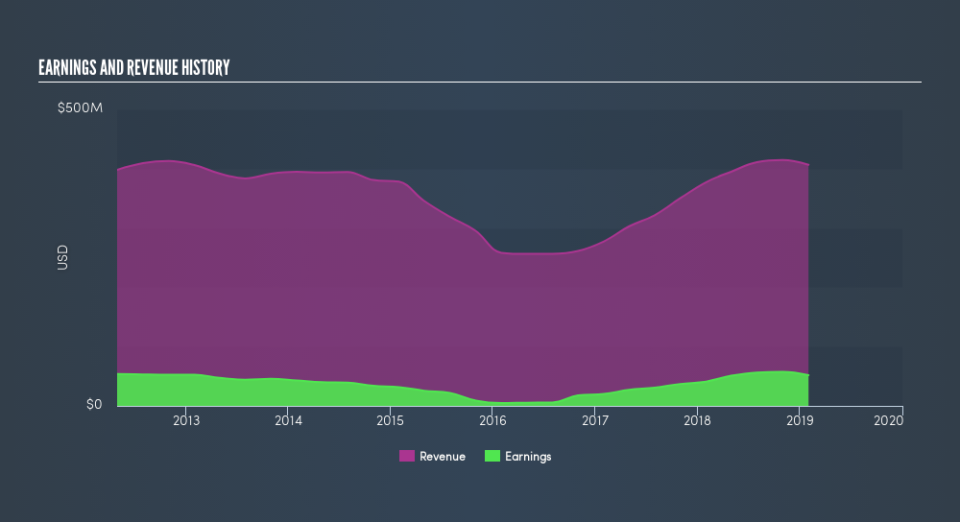Raven Industries, Inc. (NASDAQ:RAVN): What Does Its Beta Value Mean For Your Portfolio?

Want to participate in a research study? Help shape the future of investing tools and earn a $60 gift card!
If you're interested in Raven Industries, Inc. (NASDAQ:RAVN), then you might want to consider its beta (a measure of share price volatility) in order to understand how the stock could impact your portfolio. Volatility is considered to be a measure of risk in modern finance theory. Investors may think of volatility as falling into two main categories. The first category is company specific volatility. This can be dealt with by limiting your exposure to any particular stock. The other type, which cannot be diversified away, is the volatility of the entire market. Every stock in the market is exposed to this volatility, which is linked to the fact that stocks prices are correlated in an efficient market.
Some stocks see their prices move in concert with the market. Others tend towards stronger, gentler or unrelated price movements. Beta can be a useful tool to understand how much a stock is influenced by market risk (volatility). However, Warren Buffett said 'volatility is far from synonymous with risk' in his 2014 letter to investors. So, while useful, beta is not the only metric to consider. To use beta as an investor, you must first understand that the overall market has a beta of one. A stock with a beta below one is either less volatile than the market, or more volatile but not corellated with the overall market. In comparison a stock with a beta of over one tends to be move in a similar direction to the market in the long term, but with greater changes in price.
See our latest analysis for Raven Industries
What does RAVN's beta value mean to investors?
Looking at the last five years, Raven Industries has a beta of 1.33. The fact that this is well above 1 indicates that its share price movements have shown sensitivity to overall market volatility. Based on this history, investors should be aware that Raven Industries are likely to rise strongly in times of greed, but sell off in times of fear. Beta is worth considering, but it's also important to consider whether Raven Industries is growing earnings and revenue. You can take a look for yourself, below.
Could RAVN's size cause it to be more volatile?
Raven Industries is a small cap stock with a market capitalisation of US$1.4b. Most companies this size are actively traded. It is quite common to see a small-cap stock with a beta greater than one. In part, that's because relatively few investors can influence the price of a smaller company, compared to a large company.
What this means for you:
Beta only tells us that the Raven Industries share price is sensitive to broader market movements. This could indicate that it is a high growth company, or is heavily influenced by sentiment because it is speculative. Alternatively, it could have operating leverage in its business model. Ultimately, beta is an interesting metric, but there's plenty more to learn. In order to fully understand whether RAVN is a good investment for you, we also need to consider important company-specific fundamentals such as Raven Industries’s financial health and performance track record. I urge you to continue your research by taking a look at the following:
Future Outlook: What are well-informed industry analysts predicting for RAVN’s future growth? Take a look at our free research report of analyst consensus for RAVN’s outlook.
Past Track Record: Has RAVN been consistently performing well irrespective of the ups and downs in the market? Go into more detail in the past performance analysis and take a look at the free visual representations of RAVN's historicals for more clarity.
Other Interesting Stocks: It's worth checking to see how RAVN measures up against other companies on valuation. You could start with this free list of prospective options.
We aim to bring you long-term focused research analysis driven by fundamental data. Note that our analysis may not factor in the latest price-sensitive company announcements or qualitative material.
If you spot an error that warrants correction, please contact the editor at editorial-team@simplywallst.com. This article by Simply Wall St is general in nature. It does not constitute a recommendation to buy or sell any stock, and does not take account of your objectives, or your financial situation. Simply Wall St has no position in the stocks mentioned. Thank you for reading.

 Yahoo Finance
Yahoo Finance 
